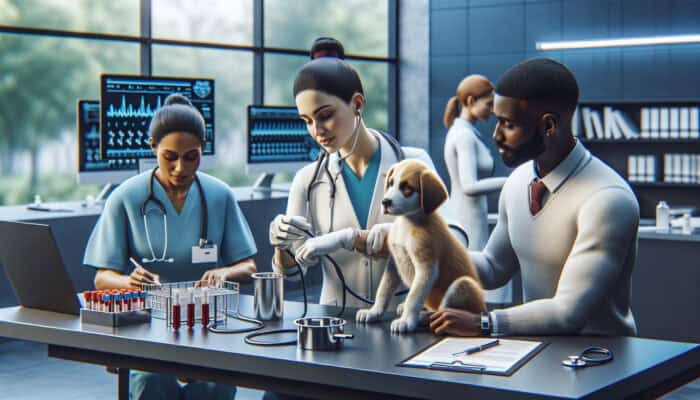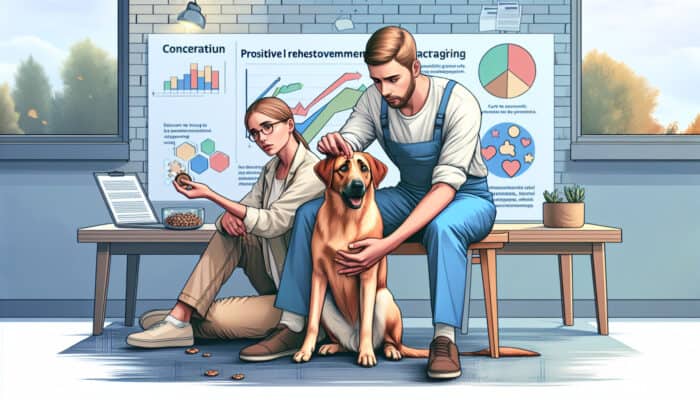Understanding the Significance of Cat Independence for Their Well-being
What Factors Influence the Solitary Behavior of Cats?

Cats, being naturally solitary animals, possess an intrinsic independence that has its roots in their evolutionary history as solitary hunters. Unlike social animals that thrive within groups, cats have developed survival techniques that emphasize their reliance on natural instincts, stealth, and cleverness to catch prey. This inherent solitary nature dramatically influences their behavior, social interactions, and self-assurance as they navigate different environments. The traits that define their independence are vital components of their survival strategies, honed and perfected over centuries.
The key characteristics of solitary cats include several traits, such as:
- Self-sufficiency: Cats have an extraordinary ability to hunt and groom themselves, making them exceptionally adapted for a solitary lifestyle.
- Territorial instincts: These animals instinctively mark and defend their territories, highlighting their need for personal space.
- Minimal social dependency: Unlike dogs, cats do not depend on a social pack for emotional support and thrive on their own.
- Curiosity and exploration: Cats enjoy exploring their surroundings in solitude, reflecting their adventurous spirit and confidence.
- Selective communication: Cats determine when to vocalize with humans or other felines, illustrating their autonomous behavior.
- Play behavior mimicking hunting: Their play often reenacts hunting actions, allowing them to practice essential survival skills in a controlled setting.
These characteristics collectively highlight why cats prefer solitude, providing them with both comfort and essential conditions for their overall health and well-being.
Understanding the Advantages of Solitude for Cats
Cats reap numerous benefits from their independent lifestyles, particularly concerning stress management and overall health. Their ability to enjoy periods of solitude enables them to engage in self-care routines such as grooming and resting, which are vital for maintaining their mental and physical health. With the freedom to be alone, cats can align their daily activities with their natural rhythms, which is essential for sustaining balance and optimal health.
One significant advantage of solitude is the reduction of stress. Cats often feel overwhelmed in bustling environments or when competing for attention from other pets. By having the option to retreat into solitude, they can decompress and recharge, leading to improved emotional stability. This is particularly important in a world filled with various stimuli, from loud noises to unpredictable interactions with other animals, which can easily overwhelm their sensitive natures.
Furthermore, independence fosters resilience in cats. When accustomed to being alone, they develop problem-solving skills and become better equipped to adapt to changes in their environments. This ability to navigate challenges without relying on others enhances their independence and boosts their confidence. Ultimately, solitude serves as a sanctuary for cats, enhancing their overall well-being and enabling them to thrive across various settings.
How Do Cats Exhibit Their Independent Characteristics?
Cats display their independence through various behaviors that underscore their self-sufficient nature. One of the most notable demonstrations of independence is their hunting instinct, a skill inherited from their wild ancestors. Even domesticated cats frequently exhibit hunting behaviors, such as pouncing on toys or stalking imaginary prey throughout their homes. This instinctual behavior emphasizes their capacity for self-care, fulfilling their need for autonomy and control over their environments.
Grooming serves as a vital expression of a cat’s independence. Cats dedicate a significant amount of time to grooming, not only for hygiene but also as a source of comfort and relaxation. This self-care ritual is essential for maintaining their health and well-being, reinforcing their solitary nature. By choosing when and how much to groom, cats affirm control over their own care and hygiene.
Moreover, exploring their surroundings exemplifies another aspect of a cat’s independent spirit. Cats possess an inherent curiosity and often venture into new areas to investigate their environments. This exploratory behavior stimulates their minds and satisfies their instinctual need for territorial examination. By engaging in solitary exploration, cats bolster their confidence and self-sufficiency, marking their territory and asserting their independence in the process.
The Essential Role of Territory in Feline Independence

Territory is crucial to a cat’s independence. As inherently territorial animals, cats instinctively mark and defend their spaces, a behavior deeply entrenched in their evolutionary history. This territoriality grants them control over their environments, which is essential for their sense of security. By claiming territory, cats empower themselves, dictating their interactions with both their surroundings and other animals.
Territorial marking occurs through various methods, including scent marking, scratching, and vocalizations. These behaviors effectively communicate their presence to other cats, delineating their space and establishing boundaries. By securing a territory, cats enhance their self-sufficiency; they can hunt, rest, and play without interference from others. This independence is vital for their emotional health, fostering a sense of belonging and safety in their environments.
In multi-cat households, territorial behavior continues to manifest, even in shared spaces. Each cat typically carves out its own niche, utilizing vertical spaces like shelves or cozy hiding spots to create personal retreats. This practice reinforces their independence, allowing them to retreat when feeling overwhelmed. Understanding a cat’s territorial nature is essential for fostering a harmonious living environment that respects their need for solitude while encouraging positive inter-cat relationships.
Effective Strategies to Maintain Independence in Multi-Cat Households
In multi-cat households, each feline often clings to its independence, exhibiting behaviors that reflect their intrinsic solitary tendencies. While cats can coexist and form social bonds with one another, their need for individual space remains paramount. Owners frequently observe their cats establishing personal routines that allow them to maintain their autonomy within the shared living space.
In a multi-cat setting, cats naturally seek out areas of solitude where they can interact with their environment on their terms. They might select specific spots for resting, exploring, or playing that are distanced from their housemates. This behavior underscores their need for independence and personal territory, which is essential for their mental health. By allowing cats to dictate their interactions and choose when to socialize, owners can create an atmosphere of respect and understanding among their pets.
Furthermore, establishing a predictable routine can significantly enhance the independence of cats in multi-pet households. Regular feeding times, play sessions, and quiet hours provide structure while respecting each cat’s individual preferences. This balance allows cats to enjoy companionship when they desire it while also having the freedom to retreat and recharge when necessary. Creating distinct spaces for each cat, equipped with personal toys and perches, ensures that their independence is honored within the dynamic of a multi-cat home.
Expert Insights on the Independent Nature of Cats
What Do Experts Say About Cats’ Preferences for Solitude?

Veterinarians and animal behaviorists consistently highlight the significance of solitude for cats, recognizing it as a natural inclination that benefits both their mental and physical health. Experts assert that a cat’s independent nature is not merely a personality trait; rather, it serves as a fundamental component of their well-being. Solitary behaviors enable them to self-regulate, manage stress, and avoid conflicts with other pets.
Dr. John Bradshaw, a respected cat behaviorist, has long advocated for a deeper understanding of cats’ intrinsic behaviors, explaining that their solitary tendencies are often misinterpreted by owners. For instance, many cats will retreat during stressful situations rather than confront them, reinforcing their need for solitude. This instinctual response is crucial for maintaining mental health and well-being, as it allows cats to escape potential threats and recharge their emotional batteries.
Numerous real-world examples support this understanding, as veterinarians have observed that cats permitted to explore their environments and retreat when necessary experience fewer behavioral problems compared to those in overstimulating settings. The concept of a “safe space” is often emphasized in veterinary practices, highlighting that providing areas where cats can feel secure and independent contributes to reducing anxiety and promoting a healthier lifestyle.
As awareness of feline behavior continues to evolve, the narrative surrounding cats’ independence is also shifting. Owners are increasingly encouraged to recognize their cats’ needs for solitude, leading to improved relationships between humans and their feline companions.
How Can Cat Owners Foster Their Pets’ Independence?
Supporting a cat’s independence involves creating an environment that respects their need for solitude while nurturing their natural behaviors. Cat owners play a crucial role in understanding and accommodating their pet’s preferences, ultimately enhancing the bond between cat and owner. One effective strategy is to provide designated spaces where cats can retreat when they require a break from social interaction.
This can be achieved through various means, such as creating cozy hiding spots, installing vertical climbing areas, and offering engaging toys that keep them entertained without constant human interaction. Cats thrive in environments where they have the choice to socialize or be alone, so providing options for both scenarios is essential.
Moreover, interactive toys that stimulate their hunting instincts can be particularly beneficial. Puzzle feeders, for example, encourage cats to work for their food, providing both physical and mental stimulation while allowing them to enjoy their independence. This kind of enrichment nurtures self-sufficiency, as it mirrors the natural behavior of hunting for sustenance.
Respecting a cat’s need for solitude is another essential aspect of supporting their independence. Identifying when a cat desires solitude is vital. Signs such as retreating to a favorite resting spot or displaying low-key behaviors, such as slow blinking, indicate that a cat is comfortable and content in its independence. By observing these cues and allowing for alone time, owners not only contribute to their cat’s happiness but also foster a deeper, more trusting relationship.
What Are the Indicators of a Happy, Independent Cat?
A joyful, independent cat displays several hallmark behaviors that reflect its contentment and overall well-being. One of the most prominent signs is purring, which indicates relaxation and satisfaction. When a cat purrs, especially while engaging in self-care activities like grooming, it is a clear sign that the feline feels secure and at ease in its environment.
Relaxed body language also serves as a telltale indicator of a happy cat. When a cat sits or lies down with its body stretched out, tail relaxed, and ears forward, it signals comfort and independence. Conversely, a tense cat or one displaying defensive postures may be feeling stressed or threatened. Observing how a cat carries itself can provide valuable insights into its emotional state.
Engaging in self-initiated activities is another sign of a well-adjusted, independent cat. Whether it is playing with a toy, exploring a new area, or simply lounging in a favorite sunbeam, these actions reflect a cat’s confidence in its surroundings. An independent cat often entertains itself, demonstrating its ability to thrive without constant interaction or stimulation from its owners.
Ultimately, happy, independent cats exhibit a balance of social and solitary behaviors. By allowing them the space to express themselves freely and respecting their autonomy, owners can ensure that their feline companions lead fulfilling lives that honor their innate independence.
Managing Social Interactions While Upholding Feline Independence
How Do Cats Navigate Social Interactions and Maintain Their Independence?
Despite their solitary nature, cats possess the capacity to form social bonds with other cats and humans. Their interactions, however, typically occur on their terms, reflecting their autonomous character. For instance, cats may approach humans for affection or play, but they are equally likely to retreat when they feel the need for solitude. This nuanced social engagement showcases their independence, as they can choose when to connect and when to disengage.
Feline social interactions can vary widely, ranging from playful exchanges with other cats to affectionate moments shared with their human companions. Cats often establish their social hierarchies through subtle gestures, such as head-butting or rubbing against one another, signaling trust and familiarity. Interestingly, these interactions can also reinforce their independence. By choosing when to engage, cats maintain a sense of control over their social experiences.
Moreover, social interactions tend to be brief. Cats may opt for short play sessions or moments of affection, followed by periods of isolation, a behavioral pattern that emphasizes their independent spirit. This selective socializing enables them to enjoy companionship while still honoring their need for alone time. Recognizing this balance between socialization and solitude is essential for understanding and supporting a cat’s emotional needs.
Ultimately, the ability to engage socially while remaining independent is a hallmark of feline behavior, emphasizing their unique approach to relationships. This dynamic fosters a greater sense of autonomy in cats, allowing them to thrive in both solitary and social contexts, which is crucial for their overall well-being.
What Role Does Solitude Play in Feline Social Dynamics?
Solitude plays an essential role in feline social dynamics, enabling cats to effectively regulate their interactions with others. Unlike social animals that thrive on constant engagement, cats benefit from the ability to manage their social encounters, retreating when necessary to maintain emotional equilibrium. This self-regulation is vital for their overall mental health and reflects their independent nature.
The capacity to choose solitude helps cats avoid potential conflicts with other animals. By having the option to disengage from social situations, they can minimize stress and anxiety. This aspect of solitude is particularly significant in multi-cat households, where competition for resources such as food and space can lead to tension. Cats capable of retreating to personal spaces are less likely to engage in territorial disputes, fostering a more harmonious living environment.
Additionally, solitude allows cats to recharge emotionally. After social interactions, they may require time alone to process their experiences and decompress. This downtime is crucial for their mental well-being, enabling them to return to social engagements feeling refreshed and ready to interact again. By acknowledging the importance of solitude in their social dynamics, owners can create environments that respect their cats’ needs, promoting healthy relationships among all pets in the household.
Ultimately, the interplay between solitude and social dynamics underscores the complexity of feline behavior. Understanding this balance can lead to more compassionate and informed approaches to cat care, ensuring that their independence is honored while still supporting social bonds.
The Effects of Solitude on Multi-Cat Households
In multi-cat households, the availability of solitude significantly contributes to the overall harmony and well-being of the feline residents. Each cat maintains its independence, often seeking out personal spaces where they can relax and recharge away from their housemates. This behavior is crucial for preventing conflicts and fostering peaceful coexistence among the cats.
Cats are territorial by nature, and providing ample solitary spaces ensures that each cat can establish its own territory within the shared environment. Areas equipped with climbing structures, cozy hideaways, and designated resting spots allow each cat to claim its own space, minimizing competition for resources and reducing stress. When cats feel secure in their territories, they are less likely to engage in aggressive behaviors or territorial disputes.
Furthermore, solitude aids in behavioral regulation among multi-cat households. Cats that have access to personal spaces can choose when to socialize and when to retreat, enhancing their emotional well-being. This choice is vital for their mental health, as it allows them to manage their interactions according to their comfort levels. For instance, a cat that prefers solitude may retreat to a quiet corner when feeling overwhelmed, avoiding potential conflicts with more social housemates.
Recognizing and supporting the need for solitude in multi-cat settings is crucial for maintaining balance. Owners can help by observing their cats’ behaviors and ensuring that they have access to safe spaces where they can escape when necessary. By respecting each cat’s independence, owners can create a harmonious living environment that nurtures emotional health and fosters positive relationships among their feline companions.
How Does Socialization Influence a Cat’s Independence Needs?
Socialization plays a significant role in shaping a cat’s need for solitude, influencing their comfort levels in various social contexts. Well-socialized cats tend to exhibit confidence in their interactions with humans and other animals, leading to a more relaxed approach to social engagements. However, this does not eliminate their need for solitude; rather, it can help to balance their social and solitary behaviors.
Cats that have been positively socialized from a young age are more likely to seek out companionship and playful interactions. They may engage in social play with other cats or humans without overwhelming stress. Yet, the need for solitude remains a fundamental aspect of their nature. These well-adjusted cats will still seek time alone to recharge, demonstrating that socialization does not negate their independent tendencies.
Conversely, less socialized cats may exhibit a heightened need for solitude. Cats that have had limited interactions with humans or other animals might feel more anxious in social situations, leading them to retreat more often when feeling overwhelmed. Their comfort levels can be significantly influenced by the quality of their social experiences. Providing positive interactions and respecting their boundaries can help ease their anxiety, gradually allowing them to feel more secure in social settings while still honoring their need for alone time.
Ultimately, socialization and solitude are interconnected elements of a cat’s behavior, influencing how they navigate their environments. Understanding this dynamic helps owners create supportive spaces that cater to both social needs and the need for independence, ensuring that all cats can thrive in their unique ways.
Can Solitude Improve a Cat’s Mental Health?
Solitude can significantly enhance a cat’s mental health by providing a stress-free environment that allows them to decompress and recharge. As inherently independent creatures, cats thrive when given the opportunity to retreat into their own spaces when feeling overwhelmed. This ability to choose solitude plays a crucial role in their overall well-being, reducing anxiety and promoting emotional stability.
When cats have access to quiet places where they can be alone, they can engage in self-soothing behaviors. Activities such as grooming, napping, and exploring their surroundings at their own pace help them manage stress effectively. For instance, a cat that feels anxious in a bustling household may find solace in a cozy nook, facilitating a sense of security and comfort.
Furthermore, solitude allows cats to process their experiences and regulate their emotions. Just as people benefit from alone time to reflect and recharge, cats require similar opportunities to maintain their mental health. By minimizing overstimulation from their environment, cats can avoid becoming overwhelmed and maintain a balanced emotional state.
Recognizing the positive impact of solitude on a cat’s mental health is crucial for owners. By creating an environment that supports their need for independence and offers opportunities for alone time, owners can help their cats thrive emotionally. Providing safe spaces and respecting their desire for solitude ultimately contributes to a happier, healthier feline companion.
Research Insights on the Benefits of Cat Independence
What Health Benefits Does Solitude Provide for Cats?
Research has indicated that solitude can lead to various health benefits for cats, particularly in terms of reducing stress and anxiety levels. Allowing cats to retreat into their own spaces enables them to manage their emotional responses to their surroundings more effectively. This ability to control their environment is essential for maintaining both mental and physical health.
Studies suggest that cats exposed to constant social interaction may experience elevated stress levels, leading to a range of health issues, including behavioral problems and physical ailments. In contrast, providing opportunities for solitude allows cats to rest and recuperate, promoting improved overall health outcomes. This connection between solitude and health is paramount, as it enables cats to recharge and recover from their daily activities.
Moreover, solitude allows cats to engage in self-care routines, such as grooming and sleeping. Regular grooming is essential for maintaining a cat’s coat and skin health, while adequate sleep is crucial for their immune system and cognitive function. Time spent alone enables them to focus on these vital activities without distractions, contributing to their overall well-being.
Expert analysis highlights that accommodating a cat’s need for solitude can lead to healthier behavioral patterns. When cats feel secure in their environments, they are less likely to exhibit stress-related behaviors, such as aggression or excessive vocalization. By recognizing the importance of solitude in their health, owners can create environments that promote positive outcomes for their feline companions.
What Do Studies Reveal About Cats’ Independence and Overall Well-being?
Numerous studies indicate that a cat’s independence is intricately linked to its overall well-being. Research shows that cats thrive when given the freedom to choose their activities and social interactions, allowing them to maintain a sense of control over their environment. This autonomy is fundamental for their mental health, as it enables them to engage with their surroundings on their terms.
One study found that cats allowed to explore their environments freely exhibited less stress and anxiety compared to those confined to limited spaces. The ability to make decisions about their activities, such as when to socialize or retreat, is crucial for their emotional health. By fostering independence, owners can help cats develop resilience and confidence, leading to improved well-being.
Additionally, studies highlight the relationship between a cat’s independence and its behavioral health. Cats that have the opportunity to engage in solitary play and exploration often display fewer behavioral issues, such as scratching or marking territory. This correlation underscores the importance of respecting their independent nature, as it directly impacts their happiness and satisfaction with life.
Ultimately, the research reinforces the notion that embracing a cat’s independence is key to promoting their overall well-being. By allowing them the space and freedom to express their solitary tendencies, owners can foster healthier, happier feline companions.
What Psychological Benefits Do Cats Gain from Solitude?
Cats derive significant psychological advantages from spending time alone, as solitude allows them to process their environment and experiences. Unlike social animals that thrive on constant interaction, cats benefit from moments of introspection and self-reflection. This autonomy is essential for their mental health, enabling them to navigate their surroundings with confidence and comfort.
One psychological benefit of solitude is the reduction of anxiety. Cats with access to quiet spaces can escape overwhelming stimuli, preventing stress from accumulating. This ability to retreat into solitude helps them maintain emotional equilibrium, providing a safe haven where they can decompress and recharge.
Additionally, spending time alone encourages cats to engage in self-directed activities, such as play and exploration. When left to their own devices, they often invent games and initiate their own hunting behaviors. This self-initiated play fosters creativity and cognitive development, as cats learn to adapt and interact with their environment independently.
Moreover, solitude supports emotional regulation. Cats can manage their responses to stressors and establish healthy boundaries when they have the option to be alone. This aspect of solitude empowers them, enhancing their self-esteem and confidence. By recognizing the psychological benefits of solitude, owners can create environments that promote mental well-being, ultimately leading to happier and healthier cats.
Strategies for Promoting Independence in Your Cat
What Techniques Can Help Enhance Feline Independence?
Encouraging independence in cats involves providing them with opportunities to explore, hunt, and play autonomously. Owners can implement various techniques to nurture this vital trait, creating an environment that supports their cats’ need for solitude and self-sufficiency.
Effective techniques for fostering independence include:
- Puzzle feeders: These engage a cat’s hunting instincts, allowing them to work for their food, which promotes mental stimulation and self-sufficiency.
- Vertical spaces: Providing shelves or cat trees enables cats to climb and explore their environments independently, enhancing their confidence.
- Interactive toys: Toys designed for solo play can enhance a cat’s confidence and self-reliance, allowing them to entertain themselves.
- Hidden treats: Distributing treats around the house encourages exploration and self-directed hunting behavior, satisfying their instincts.
- Designated quiet areas: Creating spaces where cats can retreat fosters a sense of security and autonomy, allowing them to recharge.
- Routine autonomy: Allowing cats to dictate their play and rest times reinforces their independence and control over their environment.
- Outdoor access: If safe, providing supervised access to outdoor spaces can promote exploration and self-sufficiency while satisfying their curiosity.
- Training sessions: Engaging in short training sessions can enhance cognitive abilities while allowing them to assert their independence.
By incorporating these techniques, owners can help their cats thrive independently, ensuring that their natural instincts are respected and nurtured.
The Importance of Environmental Factors in Supporting a Cat’s Solitude
Creating an environment that supports solitude is crucial for fostering a cat’s independence. An ideal space will offer various options for retreat, allowing cats to seek out quiet areas when they need to decompress. This environment should provide both safety and stimulation, balancing the need for solitude with opportunities for exploration and engagement.
One effective way to promote solitude is by providing hiding spots. Cats naturally gravitate toward enclosed spaces where they can feel secure. By incorporating boxes, cat tunnels, or designated cat beds in quiet areas, owners create safe havens for their pets. These spots allow cats to retreat from the hustle and bustle of daily life, enhancing their sense of security and comfort.
Additionally, quiet areas where cats can rest undisturbed are essential. Soft bedding and cozy corners in low-traffic zones encourage them to relax without interruption. It is also important to minimize noise and distractions in these spaces, creating a conducive environment for solitude and reflection.
Vertical space is another key component of their environment. Cats enjoy climbing and exploring at different heights, so providing shelves, cat trees, or window perches can enhance their ability to choose when to engage with their surroundings. The combination of vertical and horizontal spaces allows cats to exercise autonomy, facilitating a healthy balance between socializing and retreating.
Ultimately, fostering an environment that supports solitude is critical for nurturing a cat’s independence. By recognizing and adapting to their preferences, owners can create spaces where cats feel safe, secure, and empowered to express their unique personalities.
How to Identify When a Cat Needs More Independence
Recognizing when a cat requires more independence involves paying close attention to behavioral cues. Cats communicate their needs through subtle signs, and being attuned to these signals can help owners adjust their approaches to better support their feline companions.
One common sign that a cat needs more independence is excessive meowing or vocalization. If a cat frequently vocalizes, it may be a signal that they feel overwhelmed or crave alone time. Providing them with opportunities to retreat into solitude can help alleviate this stress and restore their balance.
Hiding behaviors can also indicate a need for more independence. If a cat is choosing to hide more often or avoiding social interactions, it may be seeking the comfort of solitude. Creating designated spaces where they can feel secure encourages them to engage in their natural independence and promotes their well-being.
Aggressive behaviors or sudden changes in temperament may also signal a cat’s need for more solitude. If a typically friendly cat begins to exhibit signs of irritability or aggression, it could be a response to overstimulation or feeling crowded. Adjusting the environment to allow for more space and opportunities for retreat can help mitigate these behaviors and restore harmony.
By recognizing these signs, owners can create a more supportive environment that respects their cat’s need for independence. This not only fosters a healthier relationship between cat and owner but also ensures that the feline has the autonomy it needs to thrive in a balanced and fulfilling life.
The Future of Cat Independence
How Will Cats’ Independence Evolve Over Time?
As our understanding of feline behavior continues to deepen, the ways we support cats’ independence may undergo significant changes. Future trends in pet ownership and environmental design will likely focus on enhancing the autonomy and well-being of cats, acknowledging their need for solitude as a crucial aspect of their lives.
Innovations in pet products and technology will play a vital role in this evolution. For instance, smart devices that monitor a cat’s activity levels and provide interactive play options can help owners cater to their pets’ independent play needs. Additionally, products designed specifically to enhance a cat’s environment, such as modular furniture that allows for climbing and exploration, will support their natural instincts and independence.
Moreover, as awareness of feline welfare grows, greater emphasis will be placed on creating environments that reflect their independent nature. This includes designing homes with multiple retreat options, ensuring that cats have access to quiet spaces where they can recharge. By prioritizing their independence, owners can foster healthier lifestyles for their feline companions and ensure their emotional needs are met.
The future will likely see a more profound respect for cats’ unique behaviors and needs, leading to better care practices that support their independence. Owners will increasingly recognize the benefits of allowing cats to thrive independently, promoting their physical and mental health in ways that align with their natural instincts.
How Do Changing Lifestyles Impact Cats’ Solitude Requirements?
Shifts in human lifestyles can significantly influence cats’ solitude, particularly as more people work from home and spend extended periods in their living environments. While this change can offer more opportunities for interaction, it is essential to recognize that cats still require their independence and time alone, even in an era of increased companionship.
With owners present more frequently, it is crucial to maintain a balance that respects a cat’s need for solitude. Cats can easily become overstimulated in environments with constant human activity, leading to stress and behavioral issues. Owners should be mindful of their cats’ cues, allowing them to retreat to quiet spaces when they need a break from social interaction.
Additionally, the presence of remote work and lifestyle changes offers a chance for owners to enrich their cats’ environments. Enhancing their solitude with engaging activities, such as interactive toys or puzzle feeders, can encourage independent play while minimizing stress. This balance ensures that cats remain stimulated and content, even as their owners are home more frequently.
Ultimately, adapting to these changing lifestyles while respecting a cat’s need for solitude is crucial for their well-being. Owners must strive to create environments that support their pets’ independence while also accommodating the realities of modern living, ensuring that cats have the space and freedom to thrive.
What Lessons Can We Learn from Cats’ Independent Nature?
Cats’ independent nature imparts valuable lessons about resilience, self-sufficiency, and the importance of personal space. Observing how cats navigate their environments can inspire humans to appreciate the significance of autonomy in their lives and relationships.
One key lesson from cats is the value of setting boundaries. Cats innately understand when they need space and are not afraid to assert their needs. This behavior serves as a reminder that everyone, including humans, requires personal time to recharge and maintain emotional health. By embracing the necessity of solitude, individuals can cultivate healthier relationships with themselves and others.
Additionally, cats exemplify the importance of self-sufficiency. Their ability to thrive independently encourages humans to explore their own resourcefulness and adaptability. In an increasingly interconnected world, fostering independence can lead to greater confidence and resilience in facing challenges.
Lastly, cats teach us about the significance of personal space. Their instinctual need for solitude highlights the importance of respecting boundaries, both for themselves and for others. By appreciating and honoring the need for personal space, individuals can foster healthier interactions and relationships in their own lives.
In essence, the lessons learned from cats’ independent nature can be applied across various aspects of life, promoting emotional health, self-awareness, and respectful interactions with both people and animals.
Technological Innovations Supporting Cat Independence
Emerging technologies are poised to enhance cats’ independence in innovative ways, promoting their autonomy while supporting emotional well-being. Smart pet products, such as automated feeders, interactive toys, and monitoring systems, allow cats to engage with their environments independently, even when their owners are away.
Smart feeders can dispense food at scheduled intervals, allowing cats to maintain their routines without relying on human intervention. This independence contributes to their overall well-being, as it mimics the natural feeding behaviors observed in the wild. By empowering cats to manage their eating habits, owners can foster self-sufficiency and autonomy.
Interactive toys equipped with sensors can provide stimulation and entertainment, encouraging cats to play independently. These toys often respond to a cat’s movements, mimicking the unpredictability of hunting, which is essential for their mental health. By engaging with these toys, cats can explore their environments and satisfy their natural instincts without needing constant human interaction.
Additionally, monitoring technologies can track a cat’s activity levels and behavioral patterns, allowing owners to better understand their pets’ needs. This data can inform adjustments to their environments, ensuring that cats have access to adequate opportunities for solitude and independent play. By embracing these technological advances, owners can enhance their cats’ independence while fostering a sense of security and well-being.
Ultimately, the integration of technology into pet care will continue to evolve, providing new ways to support feline independence. By prioritizing their needs and incorporating innovative solutions, owners can create enriching environments that reflect and honor their cats’ innate behaviors.
The Role of Cat Independence in Conservation Initiatives
Understanding and supporting cats’ independent nature is crucial in the context of conservation efforts, particularly regarding feral cat populations and wildlife protection. Recognizing the self-sufficient behaviors of cats can inform more effective management strategies that consider their natural instincts and environmental roles.
Feral cats are proficient hunters, and their independence allows them to thrive in diverse environments. However, this behavior poses challenges for wildlife conservationists, as feral cat populations can impact local ecosystems. Understanding their hunting behaviors and territorial needs can aid in developing humane management strategies that balance feline welfare with the protection of vulnerable wildlife species.
Conservation efforts increasingly adopt approaches that respect the independent nature of cats, focusing on population control methods that do not compromise their well-being. Programs that promote TNR (trap-neuter-return) initiatives allow feral cats to continue living in their environments while preventing overpopulation. By recognizing their autonomy, these programs can create sustainable solutions that benefit both cats and local ecosystems.
Additionally, education around responsible pet ownership and the importance of spaying and neutering can help prevent the influx of unwanted cats into the wild. By understanding the implications of feline independence, individuals can actively contribute to preserving both domestic and wildlife populations.
In summary, supporting feline independence is essential to ongoing conservation efforts. By acknowledging and respecting their natural behaviors, we can create strategies that benefit both cats and the ecosystems they inhabit.
Frequently Asked Questions About Cats and Their Independence
What Are the Indicators of an Independent Cat?
Indicators of an independent cat include self-directed play, seeking solitude when feeling overwhelmed, and engaging in grooming behaviors. They often prefer to explore their environment alone and may vocalize less when content, showcasing their autonomy.
Can Cats Exhibit Both Social and Independent Behaviors?
Yes, cats can demonstrate both social and independent behaviors. They often choose when to interact with humans or other pets while still valuing their alone time, showcasing their unique balance of independence and social interaction.
How Can I Support My Cat’s Independence?
Support your cat’s independence by providing safe spaces for solitude, engaging toys for solo play, and allowing them to dictate their social interactions. Respect their boundaries and routines to foster self-sufficiency and emotional well-being.
Do All Cats Need Solitude?
While most cats benefit from solitude to some degree, individual preferences can vary. Some cats may desire more social interaction than others, so it’s essential to observe their behavior and adjust your approach accordingly.
Is It Normal for Cats to Hide?
Yes, it is normal for cats to hide, especially when feeling overwhelmed or stressed. Hiding is a natural behavior that allows them to feel secure and recharge in their own space, reinforcing their independent nature.
How Does Solitude Affect a Cat’s Behavior?
Solitude can positively impact a cat’s behavior by reducing stress and anxiety. Cats that have access to alone time often exhibit fewer behavioral issues and are more emotionally balanced, which enhances their overall well-being.
What Should I Do If My Cat Becomes Aggressive?
If your cat exhibits aggression, it may be a sign of stress or overstimulation. Provide them with safe spaces to retreat and ensure that their environment allows for independence and solitude to help mitigate these behaviors.
Can Socialization Reduce a Cat’s Need for Solitude?
Socialization can influence a cat’s need for solitude, but it does not eliminate it. Well-socialized cats may seek less solitude, but they still require time alone for emotional well-being and to maintain their independence.
How Can I Tell If My Cat Is Happy?
Signs of a happy cat include relaxed body language, contented purring, and active engagement in play or exploration. A happy cat will also seek affection on their terms, demonstrating confidence and comfort within their environment.
What Impact Does Owning Multiple Cats Have on Their Independence?
Owning multiple cats can positively influence their independence, as each cat can establish its own territory. However, it’s essential to provide spaces for solitude to prevent stress and promote harmony among housemates, ensuring each cat’s needs are met.
Connect with us on Facebook!
The Article Cats Are Independent Loners: Why They Thrive Alone First Published On https://elgatoencasa.com
The Article Independent Cats: Understanding Their Thriving Solitude Was Found On https://limitsofstrategy.com


















